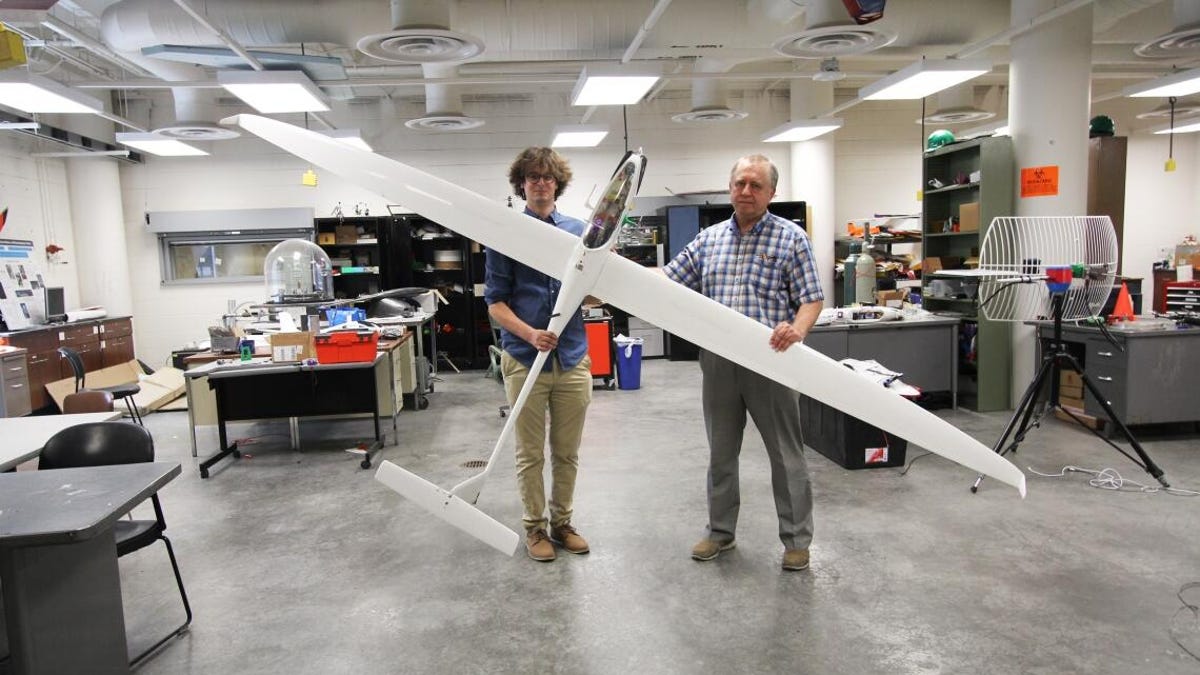Planes on Mars: Engineers Design Sailplane for Another World
First, there was the Mars helicopter. Are planes next?
In April 2021, NASA's Ingenuity Mars helicopter took flight and opened up a new era of off-the-ground exploration on the red planet. A team led by engineers at the University of Arizona wants to fly even higher with an ambitious concept for a motorless sailplane that could soar above the Martian surface.
A paper published this month in the journal Aerospace details a preliminary design for a Mars sailplane that could fill in the science-observations gap between surface rovers and orbiting spacecraft. The proposed plane would be equipped with sensors and cameras and use wind energy to fly for hours or even days.
A Mars sailplane would carry sensors and cameras to gather data.
NASA research scientist Alexandre Kling, a co-author, called out the first few kilometers above the ground as an important area of study in a University of Arizona statement on Thursday. "This is where all the exchanges between the surface and atmosphere happen," Kling said. "This is where the dust is picked up and sent into the atmosphere, where trace gases are mixed, where the modulation of large-scale winds by mountain-valley flows happen. And we just don't have very much data about it."
The Arizona team's concept plane would weigh just 11 pounds (5 kilograms) with a wingspan of 11 feet (3.4 meters). It could be packed into a small satellite, delivered to Mars as part of a larger mission and then unfold like origami or inflate to its final size. The researchers are also considering delivery into the atmosphere by way of a balloon or blimp that could act as a docking station for the plane.
Mars has a thin atmosphere that makes flight challenging, but Ingenuity is demonstrating that powered, controlled flight is possible there. The solar-powered rotorcraft is a remarkable machine, but it can't fly very far or very high or for very long.
The sailplane idea dispenses with solar panels and batteries and uses a resource that's already abundant on Mars: wind. This could take the form of "dynamic soaring," a flying technique used by albatrosses on Earth.
"Dynamic soaring looks something like the S-shaped pattern skiers use to control their descent down a mountain," the university said. "However, every time the sailplane changes directions, it also begins changing altitude -- and rather than slow the sailplane down, the maneuver helps it gain speed."
The Mars sailplanes are a long way off from launching to space is far off, but the team plans to conduct high-altitude tests with experimental planes on Earth to better understand how they might function in the red planet's conditions.
The success of Ingenuity has opened up the Martian skies. Sailplanes could expand that ability in extraordinary ways, taking flight over volcanoes, canyons and craters, giving scientists a new way of looking at Mars.


